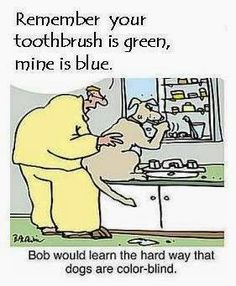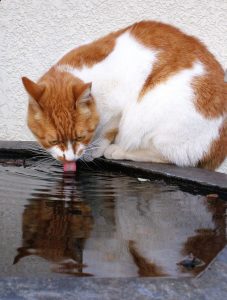Tips for Grooming & Bathing Your Pet
Shedding & Seasonal Coats
A healthy pet is going to shed—it is part of a natural cycle where old hair falls out allowing new hair to grow in. The amount of shedding, however, is often dependent upon the health of your pet, their breed type, and the season². It is typical for a pet to develop a thick undercoat for the winter and then to gradually shed it during the warmer months. While this process is more obvious in outdoor pets, pets kept indoors are more likely to constantly shed throughout the year. It is an important process for pets to shed dead hair and to keep their coat healthy². While you cannot stop a healthy pet from shedding, regular brushing can help reduce the amount of hair circulating in your home². Feeding your pet an appropriate diet, rich with digestible protein sources, may also solve excessive shedding problems, as can certain fatty acid supplements⁵. If you think your pet is experiencing too much hair loss, this may be a sign of more severe health problems, such as parasites, infections, sunburn, or even cancer². If you notice your pet is showing signs of skin irritation, bald spots, or open sores, then you should speak with your veterinarian about treatment options.
Supplies
In order to establish an effective grooming routine for your pet, you need to supply yourself with an arsenal of tools. For starters, you need a shampoo that is appropriate for the age and species of your pet. Kittens, puppies, and even ferrets all have their own particular type of shampoo¹. Other important tools include a large cup or pitcher for rinsing off your pet, ear cleaners, the right brush for the kind of coat your pet has, nail trimmers that fit the size of your pet’s nails, a toothbrush and animal toothpaste, and safety scissors¹.
Brushing
Brushing should happen anywhere from daily to weekly, depending on your pet’s coat. Regular grooming with a brush or comb will help maintain the health of your pet’s coat by removing dirt and spreading natural oils throughout their fur². This is also a good opportunity to check your pet’s coat for fleas and ticks.
All pets need to be groomed regularly, even pets with short fur. There are different brushing requirements depending on the type of coat your pet has. For example, it is better to use a rubber brush on a smooth, short coat (like you would find on a Chihuahua or Boxer), and a slicker brush followed by a bristle brush for short, dense coats and long coats (like on a Yorkshire terrier or Retriever)³. If your pet’s coat is long and prone to matting, then it may be necessary to establish a daily brushing ritual, whereas short, dense fur can make do with only a weekly brush². Always be gentle when teasing out tangles, and, if you need to cut out matted fur, take care not to come too close to your pet’s skin. The more you groom your pet, the more familiar you will become with their coat’s needs. Your veterinarian can also recommend a brush or comb for the specific type of coat your pet has.
Use this time to bond with your pet and reward them with lots of praise as you brush them. Brushing and combing feels good to your pet, and most pets enjoy it. Be patient, and enjoy the quality time with your pet³.
Bathing
The trick with bathing your pet is to make sure they have positive associations with the process⁴. Baths should always be warm, even during the summer¹. Brush your pet before you bathe them, as this will make it easier to work shampoo into their coat. Once all the dead hair and mats have been removed, place your pet in a tub or sink that has been filled with two to three inches of lukewarm water². Use a spray hose, plastic pitcher, or cup to pour the water over your pet until their coat is saturated. Be careful to never spray or pour water directly in your pet’s ears, eyes, or nose; not only is it painful if you spray water in these areas, but it can also cause health problems for your pet². Putting cotton balls in your pet’s ears can help to avoid them becoming filled with water while you are rinsing your pet off; you can also simply try to avoid spraying water into them⁴. Gently massage the shampoo into their fur. Rinse as you go and repeat if needed. Afterwards, rub your pet down with a clean towel to dry them off; this is especially important for very young, old, or sick animals, to prevent chilling. If your pet has a wrinkly face, clean the folds with a damp cotton cloth to avoid irritation caused by dirt and bacterial build-up².
Like most grooming procedures, your pet can come to enjoy bath time so long as you make it a positive, praise-filled experience for them⁴.
Nails
Keeping your pet’s nails trimmed will protect your pet from the pain caused by long nails breaking off. Long nails can also cause permanent damage to your pet’s toes, as they have the potential to bend toes into unnatural shapes¹. If your pet’s nails click against the ground or get snagged on the floor, then it is time to cut them². In order to cut your pet’s nails, start by spreading each of their toes while inspecting for dirt. While firmly holding the toe, use the trimmer to cut the nail from top to bottom at a slight angle. Avoid trimming at a blunt angle, as you do not want to disrupt the natural curvature of the nail². While cutting, look carefully for the quick—the vein in the nail where the blood supply ends¹. If you accidentally cut the quick, it will hurt your pet and it will bleed. If you do accidentally cut the quick, remain calm and apply pressure to the nail for 30 seconds until the bleeding stops¹. To avoid the quick, look for the beginning of a circle—still nail-colored—on the surface of the cut as you are trimming nails². When you see this circle, then it is time to move on to the next nail.
Positive reinforcement is key to keeping your pet calm during this process. Take your time cutting their nails, and offer frequent rewards. Even if you can only trim one nail per day, offer your pet lots of praise and the job will eventually be completed. If your pet is fearful of having their nails cut, then do not force them into it. It is better to have a professional groomer or a veterinarian do the job rather than risk harming your pet¹.
Teeth
All animals need to have their teeth tended to. There are different methods for pet dental care, such as a gentle mouth massage (which most well trained, patient animals enjoy), treats which promote dental health, and specialty toothpastes which strengthen teeth¹. It may take time to acclimate your pet to having their teeth brushed. Start by massaging their lips and gums, and then slowly introduce a toothbrush specially designed for pets². This process may take a few weeks to complete, but your pet will likely come to enjoy it. Chew toys can also be a good way to massage your pet’s gums and to make their teeth strong². While teeth care is often overlooked, it can have the benefit of improving your pet’s breath, while avoiding the high cost of professional dental care.
Take-Away Points
- Make all grooming a positive experience for your pet!
- Be patient and gentle.
- Different types of coats require different care—consider the brush or comb you’re using, and how frequently you should be brushing.
- Protect your pet’s eyes and ears during bath time.
- Avoid the quick when trimming your pet’s nails.
- Routine dental care is simple and will help save you money in the long term.
- Shedding is normal and healthy, though regular brushing will help to prevent excessive shedding.
Sites Referenced
- “Pet Grooming Tips.” Best Friends Animal Society. N.p., 27 Jan. 2016. Web. 31 May 2017.
- “Dog Grooming Tips.” ASPCA. N.p., n.d. Web. 31 May 2017.
- “Dog Grooming Tips.” Cesar’s Way. N.p., 28 Jan. 2016. Web. 31 May 2017.
- “How to Bathe Your Dog.” Cesar’s Way. N.p., 05 Nov. 2015. Web. 31 May 2017.
- “10 Tips for Controlling Shedding.” Doctors Foster and Smith. N.p., n.d. Web. 31 May 2017.







